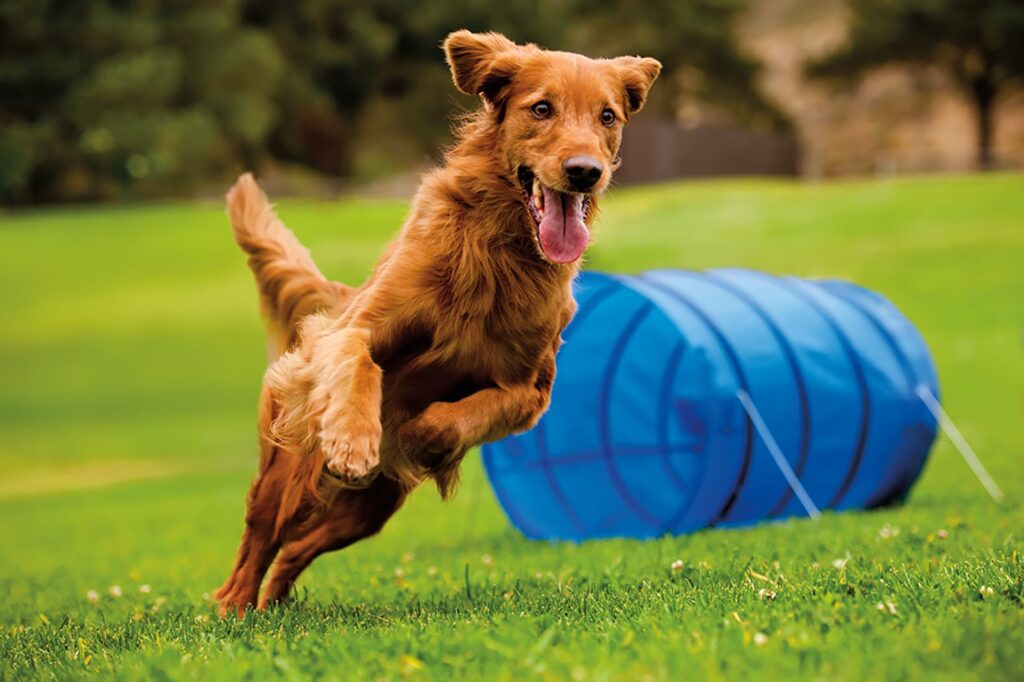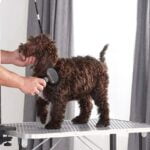Table of Contents
Training a dog for agility is a rewarding endeavor that strengthens the bond between you and your pet while providing physical and mental stimulation. Agility training involves guiding your dog through an obstacle course with speed and precision. In this article, we outline 10 essential steps for training a dog for agility to ensure your pet’s success in agility competitions.

Start with Basic Obedience Training
Before beginning agility training, ensure your dog has mastered basic obedience commands such as sit, stay, come, and heel. These commands form the foundation for agility training. For more on obedience training, visit ASPCA Dog Training Tips.
Build a Strong Bond with Your Dog
A strong bond between you and your dog is crucial for successful agility training. Spend quality time together, engage in play, and practice positive reinforcement techniques. For tips on bonding with your dog, see AKC Bonding Tips.
Introduce Agility Equipment Gradually
Start by introducing your dog to agility equipment one piece at a time. Begin with simple obstacles like tunnels and jumps, and gradually introduce more complex equipment such as weave poles and A-frames. For a guide on agility equipment, visit Clean Run Agility Equipment.
Use Positive Reinforcement
Positive reinforcement is key to successful agility training. Reward your dog with treats, praise, and play for completing obstacles correctly. This encourages them to repeat the behavior. For more on positive reinforcement, check out Humane Society Positive Training.
Practice Patience and Consistency
Agility training requires patience and consistency. Practice regularly, but keep training sessions short and fun to maintain your dog’s interest and enthusiasm. For more on consistent training, see PetMD Agility Training.
Teach Directional Commands
Directional commands such as “left,” “right,” “go,” and “come” are essential for guiding your dog through an agility course. Teach these commands using treats and toys as lures. For more on teaching directional commands, visit Cesar’s Way Agility Tips.
Focus on Physical Fitness
Agility training is physically demanding, so ensure your dog is in good health and fitness. Regular exercise, a balanced diet, and routine veterinary check-ups are essential. For fitness tips, see AKC Exercise Tips.
Create a Safe Training Environment
Ensure your training area is safe and free from hazards. Use non-slip surfaces and secure any loose equipment. Always supervise your dog during training to prevent injuries. For more on creating a safe environment, visit The Spruce Pets Agility Setup.
Gradually Increase Difficulty
As your dog becomes more confident with agility equipment, gradually increase the difficulty of the course. Introduce sequences of obstacles and work on improving speed and accuracy. For advanced training tips, check Clean Run Advanced Training.
Join an Agility Club or Class
Joining an agility club or class provides structured training, access to professional guidance, and socialization opportunities for your dog. Look for local clubs and classes in your area. For a directory of agility clubs, visit AKC Agility Clubs.
Conclusion
Training a dog for agility is a rewarding experience that enhances your dog’s physical fitness and mental sharpness while strengthening your bond. By following these 10 essential steps, you can set your dog up for success in agility competitions. Remember to be patient, consistent, and positive throughout the training process. For more tips on dog training and agility, check out our Dog Training Guide.
FAQs on Training a Dog for Agility
What age should I start agility training with my dog?
You can start basic training and socialization at a young age, but it’s best to wait until your dog is at least one year old before beginning formal agility training to ensure their joints are fully developed.
Can all dog breeds participate in agility training?
Yes, most dog breeds can participate in agility training, though some breeds may be more naturally suited to the sport. It’s important to consider your dog’s physical capabilities and health.
How often should I train my dog for agility?
Short, regular training sessions are more effective than long, infrequent ones. Aim for 2-3 times a week, keeping sessions fun and engaging.
What if my dog is afraid of the agility equipment?
Introduce the equipment gradually and use positive reinforcement to build your dog’s confidence. Never force your dog to interact with the equipment if they are fearful.
Do I need special equipment to train my dog for agility?
Yes, agility training requires specific equipment such as jumps, tunnels, weave poles, and A-frames. You can purchase these or create DIY versions.
Can I train my dog for agility at home?
Yes, you can set up a basic agility course in your backyard or a safe open space. Ensure the area is secure and free from hazards.











